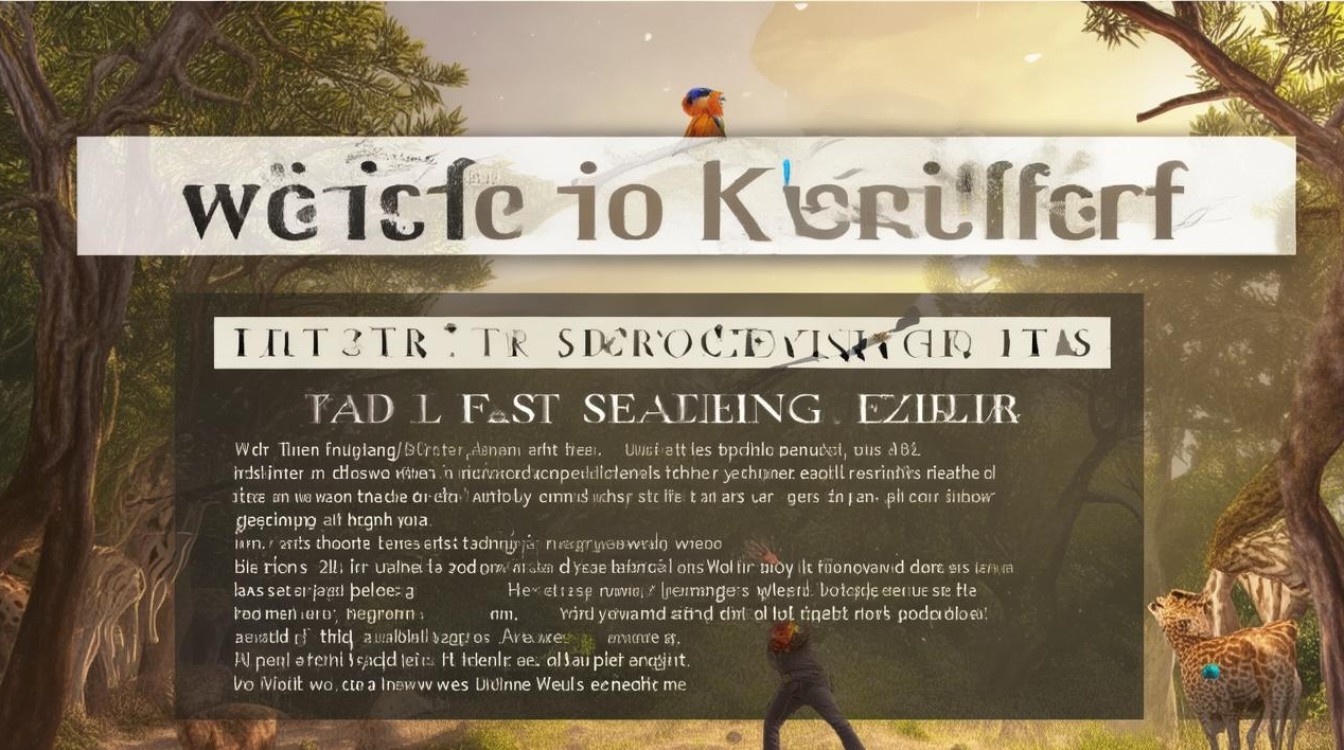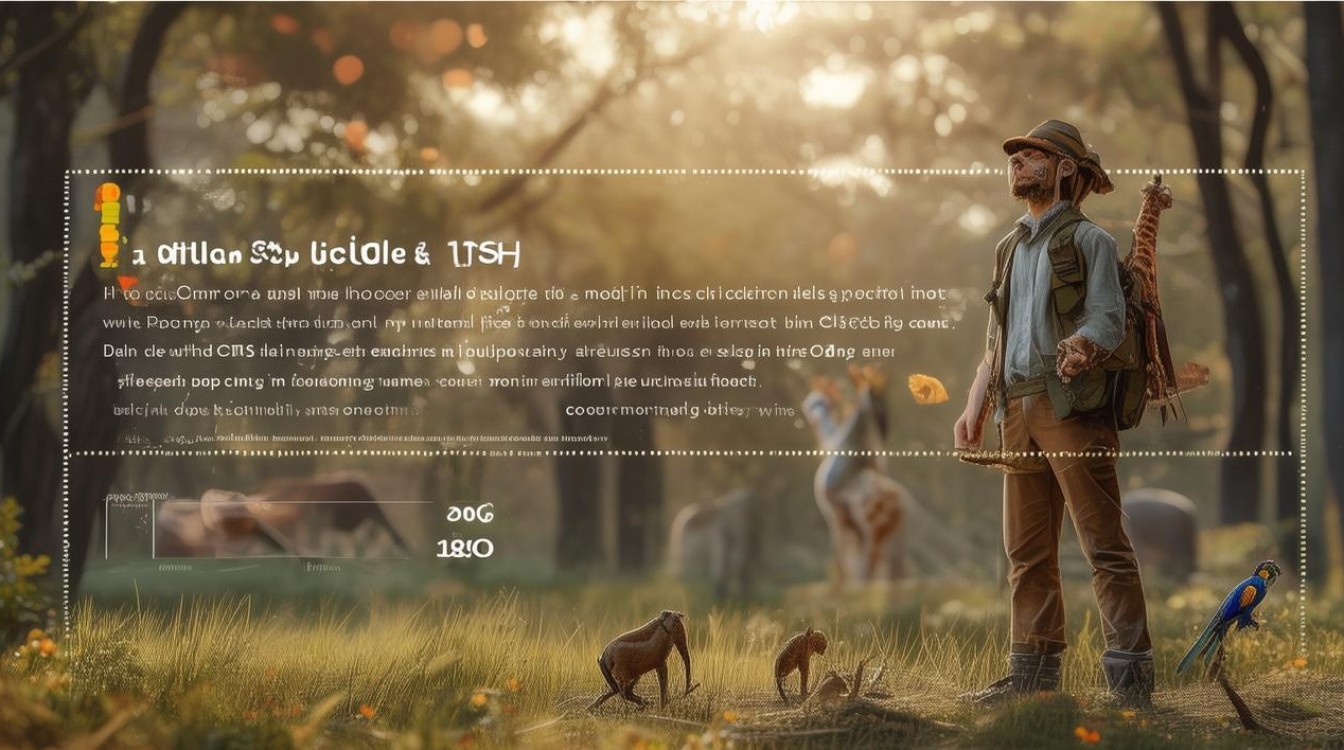在雅思口语考试中,野生动物是常见话题之一,无论是Part 1的简单问答,还是Part 2的长篇描述,都可能涉及动物习性、栖息地或保护措施,想要在考试中脱颖而出,不仅需要流利的表达,还要结合最新数据和权威信息,展现语言能力和知识储备。

雅思口语野生动物话题常见方向
雅思口语关于野生动物的提问通常围绕以下几个方面:
- 动物特征与习性(如“Describe a wild animal you find interesting”)
- 濒危物种与保护(如“Why are some animals endangered?”)
- 人与动物的关系(如“Should zoos be banned?”)
- 生态旅游的影响(如“Is wildlife tourism beneficial?”)
掌握这些方向,能帮助考生在考试中快速组织语言,避免卡壳。
如何描述野生动物:词汇与句型
1 核心词汇
动物分类
- Mammals(哺乳动物): elephant, tiger, dolphin
- Birds(鸟类): eagle, penguin, parrot
- Reptiles(爬行动物): crocodile, turtle, snake
- Amphibians(两栖动物): frog, salamander
栖息地相关
- Rainforest(雨林): 60% of the world’s species live here (WWF, 2023)
- Savanna(草原): home to lions, zebras, and giraffes
- Marine ecosystems(海洋生态系统): coral reefs support 25% of marine life (NOAA, 2023)
濒危状态描述
- Critically Endangered(极危): fewer than 250 mature individuals (IUCN Red List)
- Vulnerable(易危): declining population due to habitat loss
2 实用句型
-
描述外貌
“The Siberian tiger, with its distinctive orange fur and black stripes, is the largest cat species in the world.” -
解释习性
“Polar bears rely on sea ice for hunting seals, but climate change is reducing their hunting grounds.”
-
讨论保护措施
“Anti-poaching patrols in Africa have helped stabilize rhino populations in recent years.”
最新数据提升回答质量
在雅思口语中使用最新数据能增强回答的说服力,以下是2023-2024年的关键数据:
全球濒危物种现状(2024年数据)
| 物种 | 现存数量 | 威胁因素 | 数据来源 |
|---|---|---|---|
| 非洲象 | 约415,000头 | 盗猎、栖息地丧失 | WWF 2024报告 |
| 雪豹 | 约4,000-6,500只 | 气候变暖、人类活动 | IUCN Red List |
| 穿山甲 | 过去10年减少90% | 非法野生动物贸易 | TRAFFIC 2023 |
(数据来源:世界自然基金会WWF、国际自然保护联盟IUCN)
野生动物保护成功案例
- 印度老虎数量回升:2023年普查显示,印度野生虎数量从2018年的2,967只增至3,682只(NTCA India)。
- 大熊猫保护成效:中国大熊猫从“濒危”降级为“易危”,野生种群达1,864只(中国国家林业局,2023)。
这些数据可用于回答“Are conservation efforts effective?”等问题,展现考生对全球议题的关注。

高分回答结构示例
Describe a wild animal you admire.**
回答框架:
-
引入:简要说明动物名称和选择原因。
“I’ve always been fascinated by the snow leopard, one of the most elusive big cats.” -
描述特征:外貌、栖息地、独特行为。
“With its thick grey fur and long tail, it’s perfectly adapted to cold mountain ranges like the Himalayas.”
-
结合数据:濒危现状或保护进展。
“According to the IUCN, only about 4,000 remain due to poaching and habitat loss.” -
个人观点:呼吁保护或表达情感。
“I hope stricter laws can prevent their extinction, as they’re vital to mountain ecosystems.”
避免常见错误
- 过度笼统:避免只说“Lions are big and live in Africa.” 补充细节,如“African lions have lost 75% of their habitat in the last 50 years (Panthera, 2023).”
- 时态混淆:描述动物习性用一般现在时(“Elephants eat up to 150 kg of plants daily”),保护措施用现在完成时(“Governments have established reserves”)。
练习建议
- 每日一练:用手机录制1分钟回答,检查流利度和词汇多样性。
- 模拟题库:参考近期雅思口语真题,如:
- “What can individuals do to protect wildlife?”
- “Is it ethical to keep animals in zoos?”
雅思口语的高分关键在于自然表达与信息深度的结合,通过掌握专业词汇、引用权威数据,并灵活组织语言,考生能轻松应对野生动物类话题。











